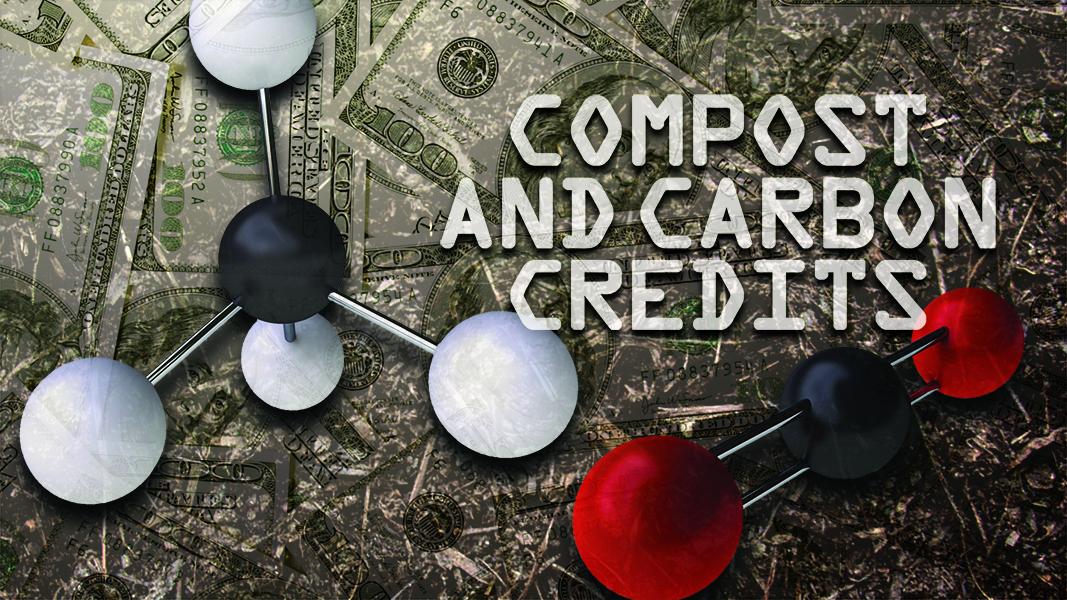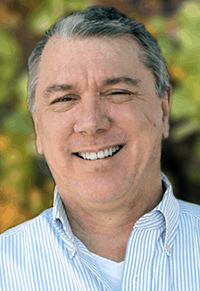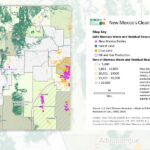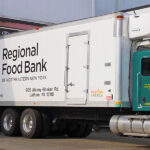 Sally Brown
Sally Brown
Part I of this final installment in my Drawdown series provided an overview of the carbon trading markets and whether compost is a player. For Part II, I went straight to the expert, Scott Subler, currently the Chief Science Officer at ClimeCo, a transaction facilitator and trader of environmental commodity market products. Subler is an old-time composter who got his PhD from Penn State. Early in his career, he was a vermicomposting entrepreneur. Subler also started working on carbon markets for organics long before Drawdown or Zoom were even on the horizon.
ClimeCo specializes in regulated carbon, regional criteria pollutant trading programs, voluntary markets, sustainability, and project development and financing of greenhouse gas (GHG) abatement and mitigation systems. During our interview, we covered a range of topics, starting with a reality check on whether composting and anaerobic digestion (AD) facilities can be a player in the carbon marketplace. Subler also explains some of the nitty-gritty of the opportunities for transactions.
Brown: Carbon credits for composting were a very exciting thing on the horizon many years back. What is the reality today?
Subler: So far in the U.S., only a handful of composting facilities has received carbon credits, despite a growing market demand for carbon credits from this project type. Recent demand has been spurred by interest from an increasing number of large corporations voluntarily offsetting their ‘cradle-to-grave’ GHG emissions to meet sustainability goals.
Brown: Who gives credits, what are their value, and is the market growing or shrinking?
Subler: In the U.S., the GHG emission reductions achieved by composting food waste (avoided landfill methane emissions) are not recognized by ‘compliance markets’, i.e., state or regional governmental GHG reduction programs such as California’s cap-and-trade program and the Regional Greenhouse Gas Initiative (RGGI) in the Northeast. This is largely a result of competing regulations in the form of organic waste diversion mandates that render composting projects ineligible for offset credits (since diversion is already required by law). Although many states and local jurisdictions may not have diversion mandates in place, regulatory policy in the jurisdiction of the governmental GHG program typically sets the rules for specific project types — which is why the California cap-and-trade program does not recognize carbon credits from composting or AD of food waste anywhere in the U.S. A notable exception in Canada is the province of Alberta, which does include composting projects in its Climate Change and Emissions Management Act.
However, there is another large and rapidly growing market for carbon credits in the U.S. (and internationally) called the ‘voluntary market’. This is largely driven by corporate environmental and sustainability goals and consumer demand. Purchases of carbon credits are voluntary in that they are not required or used for compliance within regulatory frameworks. You covered some of those services in the first part of this article.
Brown: How do generators of carbon offsets get their credits traded?
Subler: Carbon credits for both compliance and voluntary markets are generally issued by formal programs known as ‘Registries’. These may be nonprofit organizations or governmental bodies (or nonprofits certified by governmental programs to issue compliance-grade credits). Registries approve formal methodologies (protocols) that set the rules for eligibility, quantification, monitoring, reporting, and verification (third-party auditing) for each project type (e.g. composting of food waste). Projects must conform to these rules to receive carbon credits. To create credits through these programs, composters have partnered with experts in carbon credit registration (like ClimeCo) since it is a fairly involved and bureaucratic process (in some ways similar to a regulatory permitting process, except you end up with something to sell at the end instead of just paying fees to a regulatory agency). Typically, these same experts provide credit marketing or brokering services as well.
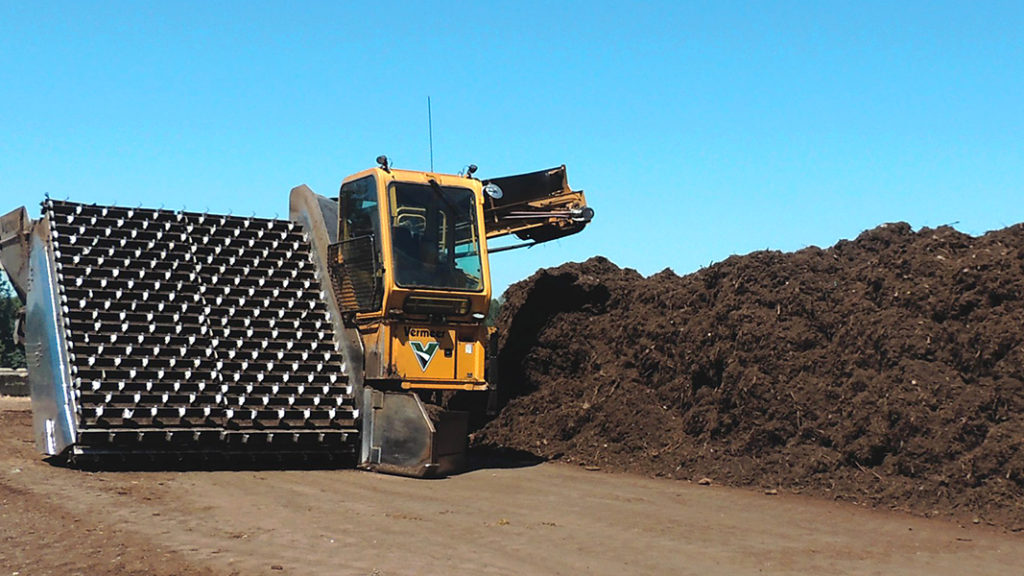
Lenz Enterprises in Stanton, Washington is one of four composting facilities in the U.S. that receives carbon credits. Photo courtesy of Lenz Enterprises
Like most other markets, supply and demand determine the value of carbon credits. In general, carbon credit prices have been steadily increasing for both compliance and voluntary markets. Compliance markets are a bit more predictable (in the short term) since demand is driven by known factors such as the total compliance obligation for emission reductions, costs of internal mitigation (at the regulated facilities), and any policy constraints placed on the use of offset credits. However, regulators often like to ‘tweak’ their programs, which creates price uncertainty over the long term. Voluntary markets are often interested in the locations, types, and additional environmental and social benefits of projects rather than simply viewing carbon credits as a generalized commodity. For this reason, carbon credits from certain registries, project types, and specific projects may be more valuable to some voluntary buyers than others. There is a fairly wide range of prices for voluntary credits, but credits from composting projects are in relatively high demand (and are scarce).
Brown: Are they food waste diversion based only?
Subler: Yes, since yard trimmings and other ‘brown’ wastes are not commonly disposed of in landfills in the U.S. Any practice that is considered ‘common practice’ or that is required by law is not eligible for carbon credits since there would be no additional emission reductions (i.e., it would have happened anyway).
Brown: Are many composters participating? For example the Climate Action Reserve (CAR) database has these five: Peninsula Composting (now defunct), Z-Best (before the California diversion mandates kicked in), Cedar Grove’s Maple Valley and Everett facilities (WA), and Lenz Enterprises (WA).
Subler: So far, those are the only five that have been issued carbon credits in the U.S., although several of these projects have been receiving carbon credits for nearly 10 years.
Brown: Is the story better/different for AD facilities?
Subler: AD is a bit different, as there are quite a few offset projects in the U.S. that receive carbon credits for anaerobic digestion of organics where methane is captured. These often include primary feedstocks such as livestock manure, municipal wastewater, food processing wastes, or pre and postconsumer food waste. Teasing out the contribution of avoided landfill methane emissions associated with food waste diversion can be difficult, as commonly used offset protocols are not perfectly flexible in accounting for every type of emission reduction. For example, dairy manure digesters often serve as local outlets for various agricultural wastes, food processing wastes, or even food wastes from grocery stores or restaurants. Wastewater treatment systems may include food waste organics from in-sink disposal or as separately collected waste streams. In many cases, the extra biogas may be valuable for energy production at these projects, but the associated emission reductions (if any) may not be accounted for specifically.
Brown: There is now more talk about credits for soil carbon with a protocol out from CAR. Do compost and other organics figure in there? If so how would the credits be allocated?
Subler: In addition to CAR, a second carbon offset program, Verra (under its Verified Carbon Standard registry) recently published a soil carbon quantification methodology. Both the CAR and Verra protocols are ‘modular’ in that they are very flexible with regard to the types of practices, and combinations of practices, that can create quantifiable emission reductions (or atmospheric withdrawals). It remains to be seen what types of projects will benefit from these protocols in the short term, since the costs of practice changes and associated monitoring may limit applicability under current and anticipated voluntary market prices over the next decade.
There also may need to be a shift in financing mechanisms for these types of projects, since carbon accrual in the soil generates credits incrementally, and there is a significant risk of reversal (e.g., soils get plowed under) and eventual loss of sequestered carbon. Given the administration change in the U.S., there may be further complications, with respect to political and regulatory overlays for agricultural projects, which may create additional uncertainty.
Brown: If you are a composter what do you do to see if your operation is credit worthy?
Subler: I would expect to see increasing opportunities for carbon offset incentives in certain regions or jurisdictions without diversion mandates and perhaps a doubling-down of (more effective) mandatory organics diversion programs in other jurisdictions. Both would likely be good for composters. We’ve been advising against toothless diversion mandates for years since they don’t create immediate incentives with ready sources of capital (credit buyers or grant programs) but instead, rely on indirect pressure on food waste generators. However, anaerobic digestion may be a more economically feasible processing technology for certain waste streams and in specific situations (depending on markets), so many composting facilities may need to continue the trend toward adopting a ‘service-first’ model rather than a ‘technology-first’ model to be competitive — servicing food waste/residuals management generators as a service rather than focusing on a particular technology (i.e., composting vs. AD).
Sally Brown, BioCycle’s Senior Adviser, is a Research Professor at the University of Washington in the College of the Environment.


